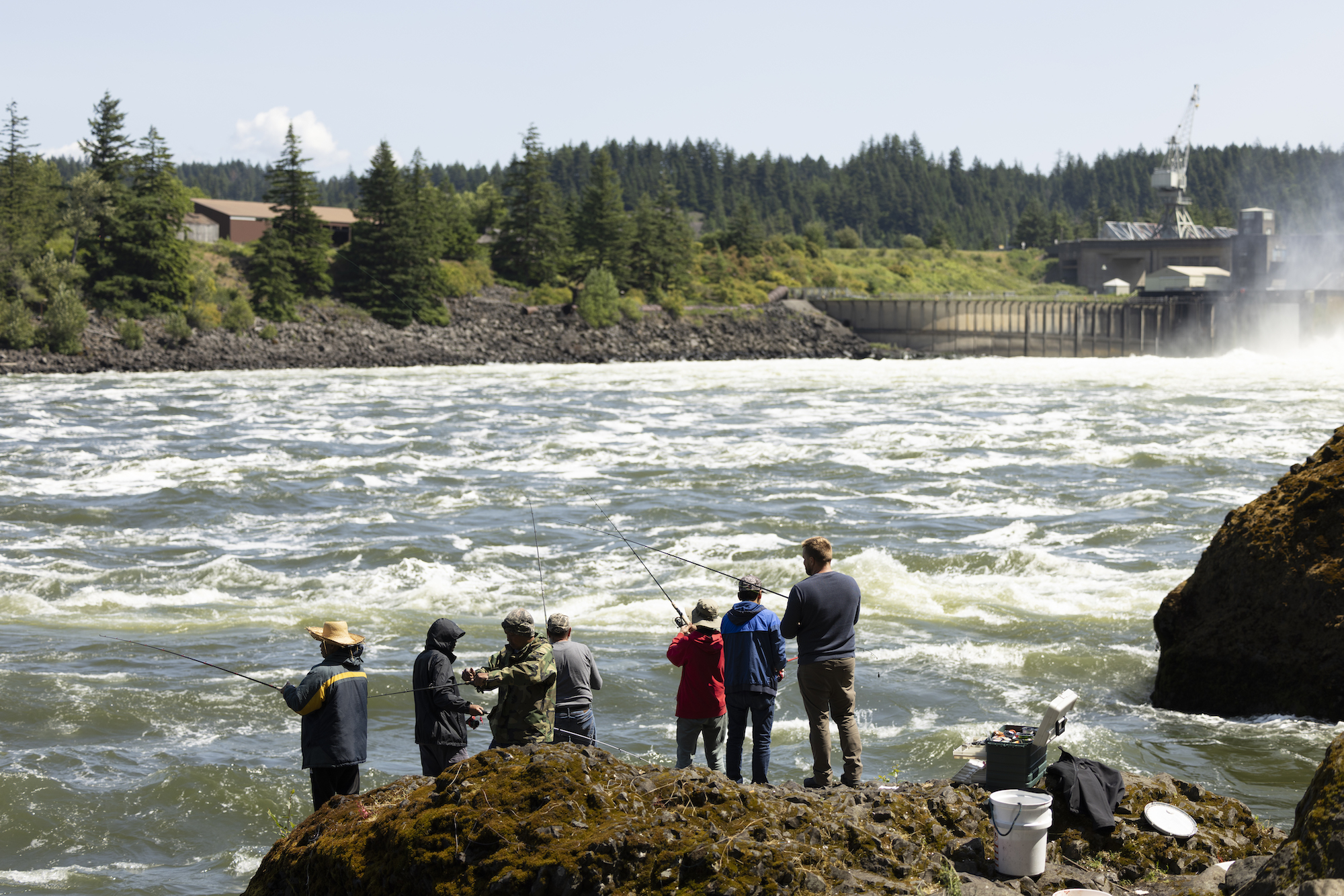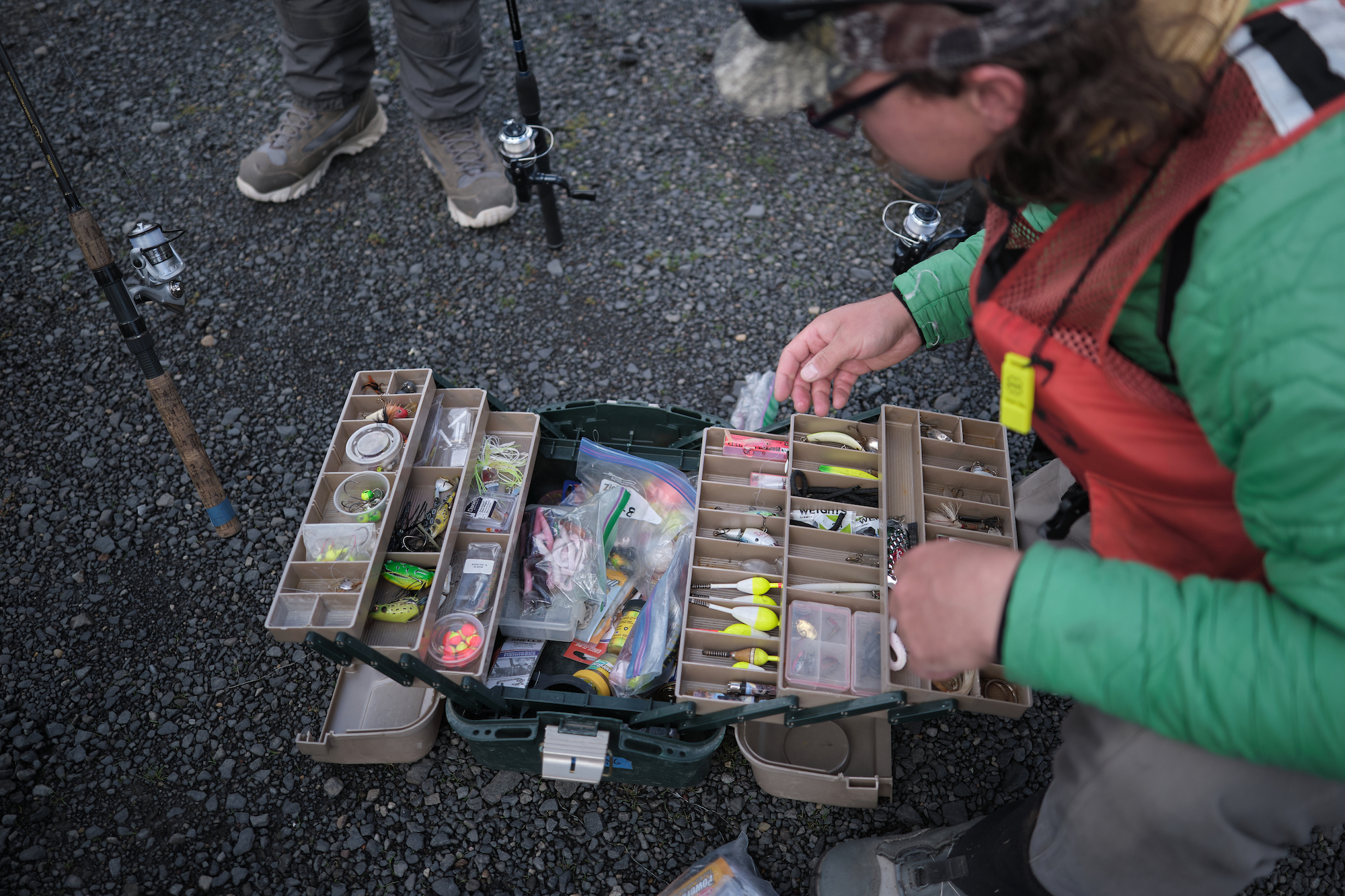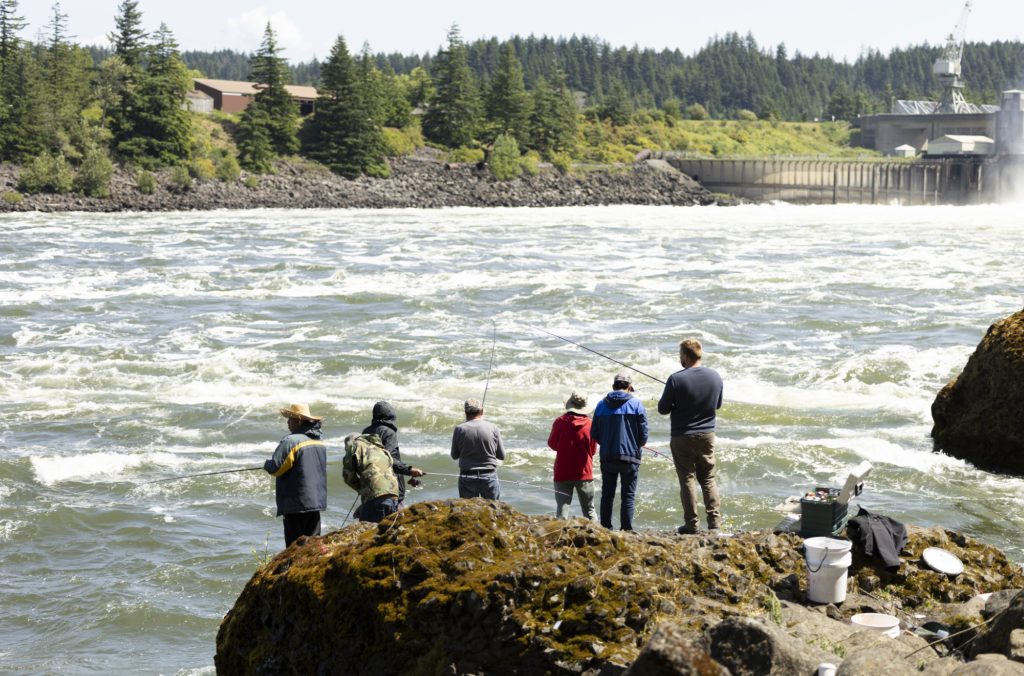Did you know that fish that reside year-round near Bonneville Dam contain some of the highest levels of cancer-causing polychlorinated biphenyls (PCBs) in the country, making them too toxic to eat?
Join the call for cleanup of the Superfund site at this popular fishing area on the Columbia, located just 35 miles upriver from the Portland-Vancouver metro area.
Why is Bonneville Dam Cleanup Important?
Take Action
¡Alerta Sobre el Consumo de Pescado!
Los peces residentes capturados entre la presa Bonneville y Ruckel Creek, en Oregón, y del sitio de acceso a la pesca por el tratado de North Bonneville (Ft. Raines) en Washington, no deben consumirse debido a los altos niveles de contaminantes, como el mercurio y los bifenilos policlorados (PCB).

Fish Advisory
Resident fish caught between Bonneville Dam and Ruckel Creek, in Oregon, and from the North Bonneville (Ft. Raines) Treaty Fishing Access Site, in Washington, should not be consumed due to high levels of contaminants, including mercury and polychlorinated biphenyls (PCBs).

Bonneville Dam Cleanup: From Superfund to Safe Again

For decades, the U.S. Army Corps of Engineers (Corps) dumped toxic waste near Bonneville Dam, leaching poisonous contaminants into the Columbia River, and causing resident fish to have the highest levels of cancer-causing polychlorinated biphenyls (PCBs) in the country. This harmful contamination continues to threaten the health of those who depend on the Columbia River—also known as N’Chi Wana, or “Big River”—for their food and livelihood. After 30 years of injustice, we stand with Tribes to demand that the Corps clean up its mess now.
What Lies Beneath
In the tranquil waters upriver from Bonneville Dam, something unexpectedly sinister lies beneath. On part of the dam complex known as Bradford Island, eagles nest in trees above a buried landfill that silently seeps into the Columbia River, as cast-off fluorescent light bulbs, sockets, and mercury-filled ballasts thrown off a cliffside litter the ground. Paint blasted off neglected equipment leaves grit up to three feet high in spots, while a nearby pistol shooting range, a relic of a bygone era, means a legacy of lead exposure.
This toxic stew, hiding in plain sight 35 miles upriver from the Portland-Vancouver metro area, has not only polluted water and land but also contaminated resident fish that live in the area year-round. Years of persistent advocacy by Tribes, community organizations, and legislators led to this area finally being granted Superfund status in 2022, making it a top-priority cleanup mandated by the Environmental Protection Agency. Yet, progress has been excruciatingly slow, and those who depend on healthy, locally caught fish are most impacted.
Salmon, shad and steelhead are best—leave the rest.
Fish that reside year-round near Bonneville Dam contain alarmingly high levels of cancer-causing PCBs, surpassing even those found at the most notorious Superfund sites. Until they were found to be carcinogens, decay-resistant PCBs were used in industrial and commercial products alike, including those dumped near the dam.
This means that from Bonneville Dam one mile upriver to Ruckle Creek, the only safe fish to eat are the migratory ones: salmon, shad, and steelhead. Until an acceptable cleanup occurs, resident fish remain on the “Do Not Eat” list, and Lamprey consumption is limited to 2 to 4 servings per month.
Stand with Tribes. Demand Cleanup.
Since time immemorial, Tribal peoples have lived along the Columbia River, following the water and the seasons while sustaining rich, culturally important fishing traditions. Today, this area remains a traditional harvest site actively used by the Yakama Nation and other Tribes, and is popular among recreational and subsistence fishers.
The Yakama Nation has spent more than two decades demanding that the Corps protect the Columbia River and clean up its pollution near Bonneville Dam. Every day the cleanup is delayed, health, trust and Treaty obligations are eroded. By joining with the Tribes in their demand for cleanup, we can ensure all people can safely bring home locally caught fish to feed their families.
Please stand with Tribes and join our fight for cleanup.
How We Engage
Columbia Riverkeeper works in solidarity with the Yakama Nation and other Tribes to fight for a swift, effective cleanup that results in clean water and toxic-free fish. We do this by:
- Educating river communities about the Superfund cleanup site and which fish from the area are unsafe to eat
- Watchdogging the cleanup process by serving on the Superfund site’s Restoration Advisory Board, where we ask the tough questions to advocate for public involvement and cleanup that protects all people who rely on the Columbia
- Putting pressure on government agencies to get to work on cleanup, including creative communications strategies, media outreach, and providing technical comments on proposed cleanup actions
- Offering opportunities for the public to share their views on cleanup with decision makers
Join us to support the call for a swift and thorough cleanup of the Superfund site at Bonneville Dam and the Columbia River. Take action today.
Resources
Fish Advisories for Bonneville Dam area: In English, Spanish, other languages
Webinar: Environmental Justice and Public Health–the Columbia River’s newest Superfund Site

Limpieza de la presa Bonneville
Superfund a nuevamente seguro better version de Sitio tóxico a un lugar seguro
En Espanol
